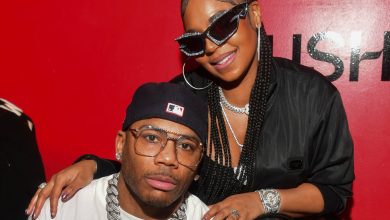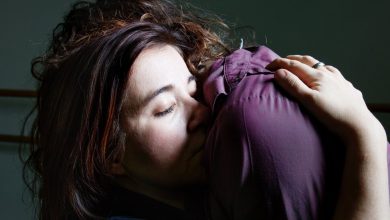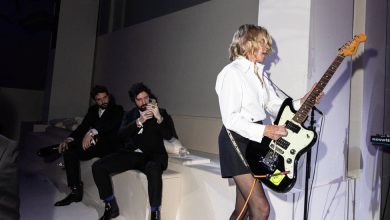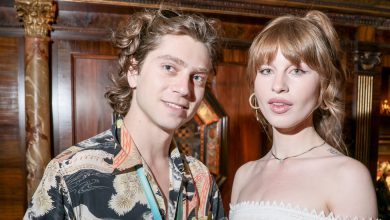Good Riddance to Good Taste

It’s been a while since a New York Fashion Week show was an hour late and almost no one cared.
A while since that sort of anarchic creative energy — the kind that once defined the space known as “downtown,” where people climbed rickety tenement stairs on the Lower East Side to see Miguel Adrover make a dress out of Quentin Crisp’s old mattress and upend the status quo — was enough to hold a room.
That’s not just because Covid put everything into a deep freeze for two years, but because a certain polite, well-behaved-ness had become a defining characteristic of New York fashion; an anesthetizing aesthetic that prized pretty over risk, palatable over explosive, like the wardrobe equivalent of green juice and Nespresso. There has been the occasional screamingly ambitious exception, like Telfar’s 2019 mosh pit and Kerby Jean-Raymond’s Kings Theater throwdown, but mostly, while the trains ran on time, they didn’t go very far.
Which is why it was notable, late Friday night, as fashion month began, that a crowd of people in towering platforms and bulky sweats and peekaboo somethings stood (stood!) waiting in the Shed, the theater in Hudson Yards, in a room bifurcated by metal scaffolding and a walkway, bouncing from toe to toe for more than an hour, waiting for the Shayne Oliver show to start.
Waiting, really, for the next stage of New York fashion to begin.
After all, if anyone was going to blow it all up, it would be Mr. Oliver, whose former label, Hood by Air, was an unapologetic romp through the fields of transgression. He stepped out of fashion in 2017, but now he was back — not with a normal runway show but with a three-day art-music-clothing extravaganza called “Headless,” which happened to involve the debut of his namesake line and a plan to disrupt the system.
Did he?
Not entirely. He crossbred silvery Swarovski crystals and spiky-shouldered black jackets, micro shorts and wader-size boots with elongated bird of prey toes, horny headgear and shredded satin gowns. There were a lot of straps and a lot of skin. Models (men and women) had many piercings and carried white roses. One wore a sparkly Telfar bag like a breastplate; another had goggles. Some came wrapped in what looked like paper.
At the end, Eartheater, the industrial pop musician otherwise known as Alexandra Drewchin, appeared in a long shredded white dress like some sort of interdimensional demon bride wailing into a microphone. She was trailed by two mostly naked attendants, one in a thong and a bolero adorned with old cassette tapes.
Half of the time neither the audience nor the people in the show seemed to have any idea what was going on or where they were supposed to be walking. It didn’t necessarily matter; the point was less the actual garments than the energy they generated. At least they were on the move. At least they were going somewhere and not just in circles.
After almost two years of limbo, that may be enough.
At it happens, a few hours earlier Eartheater — or rather, an Eartheater composition — had made another appearance, played by a quintet of violins at Proenza Schouler show. It was a coincidence but one that served to underscore the gap between how things might be and how they have been: On one hand, there was the uncomfortable real thing; on the other, a softer, gentler version, the edges sanded down.
The clothes were softer too: A modernization of the corset and the crinoline in knit and silk that owed a debt to both Jonathan Anderson’s Loewe and Phoebe Philo’s Celine. Dresses and suits were built in three color-blocked parts — tops, waist, bottom — so that narrow torsos bloomed into draped balloon skirts, coats and jackets came with their own knit “belt,” and trouser waists were rolled down to create a peplum at the hip.
They were coolly elegant, but safe. Like the designs of Jason Wu, who name-checked “American couture” and “glamour seemingly from another era” in his show notes, and then translated that as stripped-down romance with bows and faded botanicals on sporty dance dresses and Bermuda shorts suits, they were muted by good taste.
And good taste seems, right now, kind of irrelevant; a relic of a less crisis-ridden era. That’s why Brandon Maxwell’s emotional ode to his grandmother (or, as his show notes read, his Mammaw, who was one of his inspirations and who is suffering from Alzheimer’s), in black and white, cable knit and crushed silk, cinched waists and midcentury silhouettes, seemed like such an on-point metaphor. A goodbye not just to a person, but to all that.
It was a tear-jerker, done with grace, but it didn’t solve the problem of what next. (That was, literally, the title of the short story by Ottessa Moshfegh handed out at the Proenza Schouler show — “Where Will We Go Next?” but Jack McCollough and Lazaro Hernandez, that brand’s founders and designers, didn’t really have a response either.)
For that, look to Mike Eckhaus and Zoe Latta, of Eckhaus Latta, celebrating their 10th year in business.
They held their show in the old Essex market, an indoor warren of old refrigerated shelving and countertops that once served as the heart of the Lower East Side neighborhood and is now scheduled for demolition to make way for a high rise. Inside, ceilings were leaking electric cables and the tile floors were cracked, but the mood was celebratory, permeated with a sense of community past, but also present.
That has always been the core of their work, from the casting of friends and family in all shapes and sizes to the clothes, which have a singular craft-y intelligence that avoids easy categorization; subversive without being aggressive and intensely tactile. Over the years they have become more polished and slightly less art school, but they have never lost their sense of soul.
See the show, where their friend and mentor (and famously indie ’90s designer) Susan Cianciolo walked, as did the model Frankie Rayder, whose heyday was the turn of the millennium, and the actress Hari Nef. Nude sequins covered sheer skirts and dresses like glimmering fish scales; denim was either shredded into silken fringe or darned with crocheted mohair; and amoeba-shaped chain mail was pieced together into a slip dress. Layers were used to reveal chunks of flesh in unexpected places, like the inner thigh and just below the buttocks. The colors were foil, oxblood, chocolate and toad. It ended with a guy in a little black dress, zipped up the back.
The effect was of a giant potluck that might turn into an orgy. The subject was destruction and resurrection at the same time. A decade ago that made Eckhaus Latta outsiders (where was the pretty?), but now it makes them visionaries.
“The future is people walking down the street laughing,” went the prose poem handed out at the show, along with a magazine filled with Eckhaus Latta memories and associations from people who wear the brand; for whom it is embedded in their lives.
As an answer, it works.




